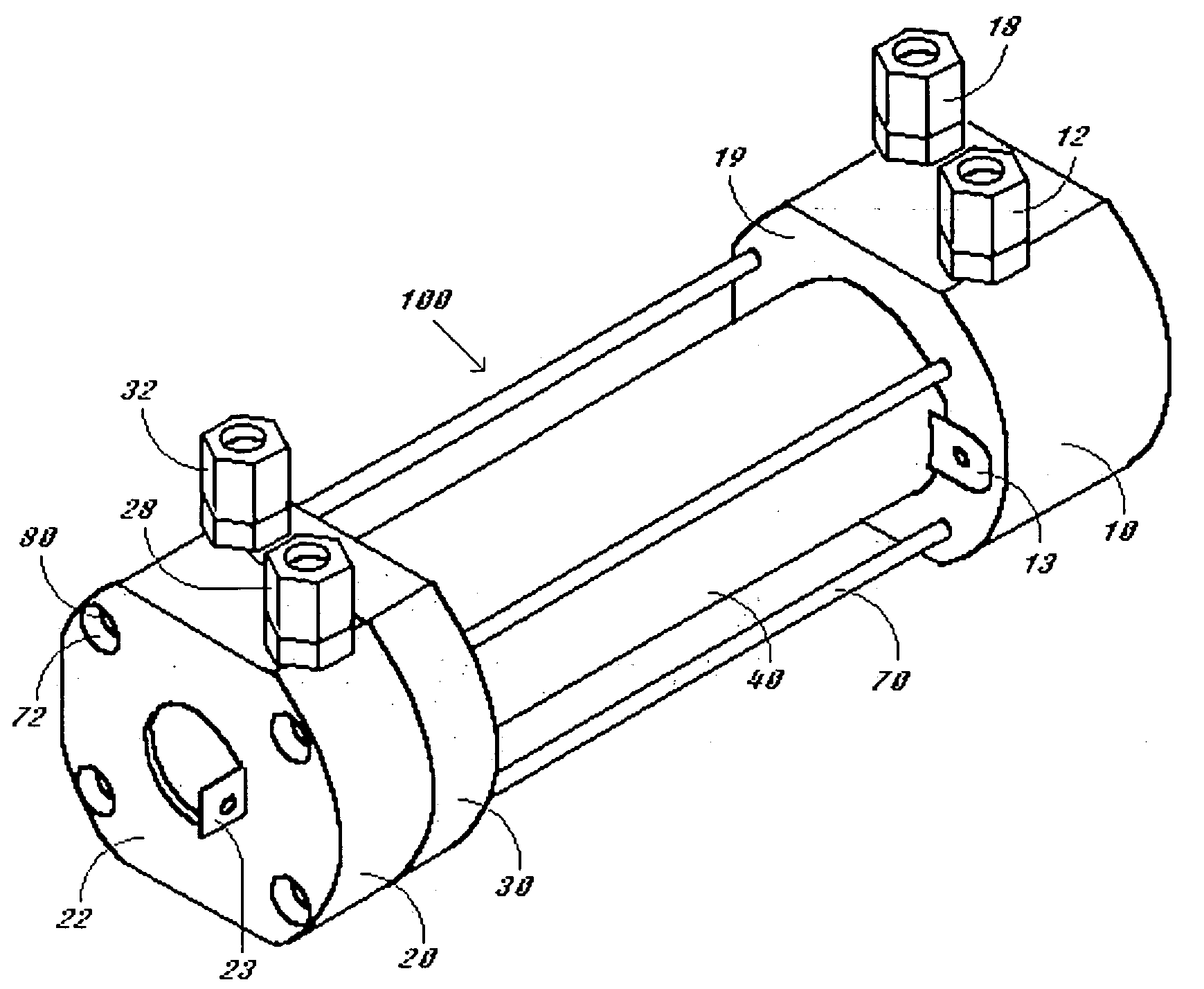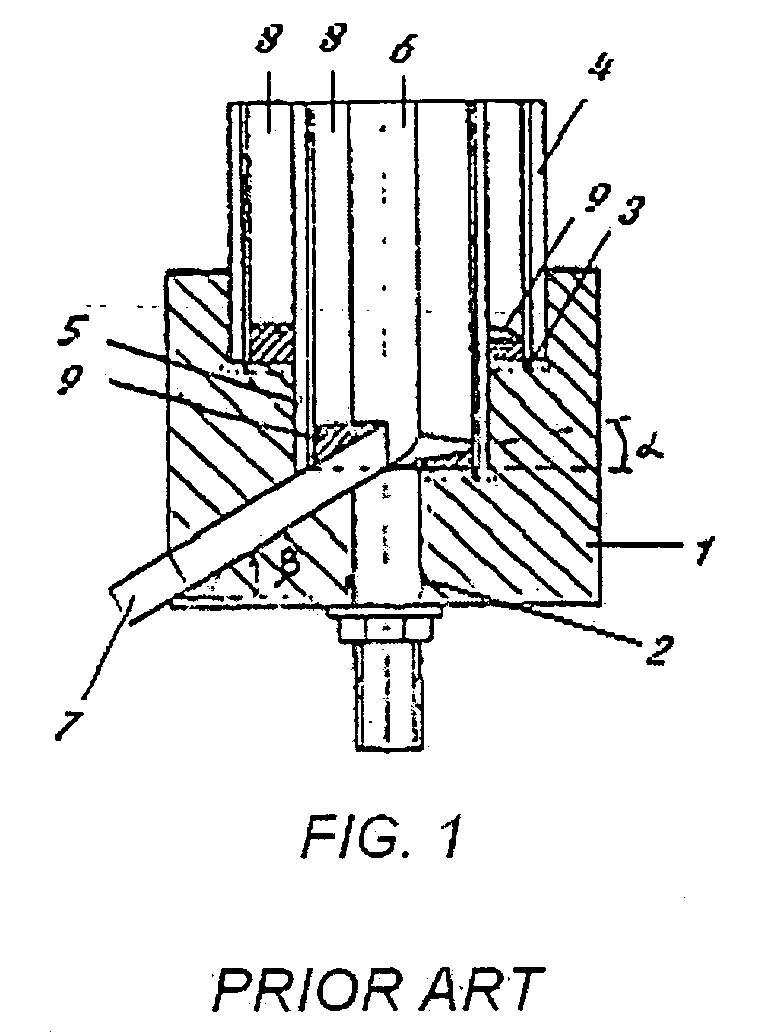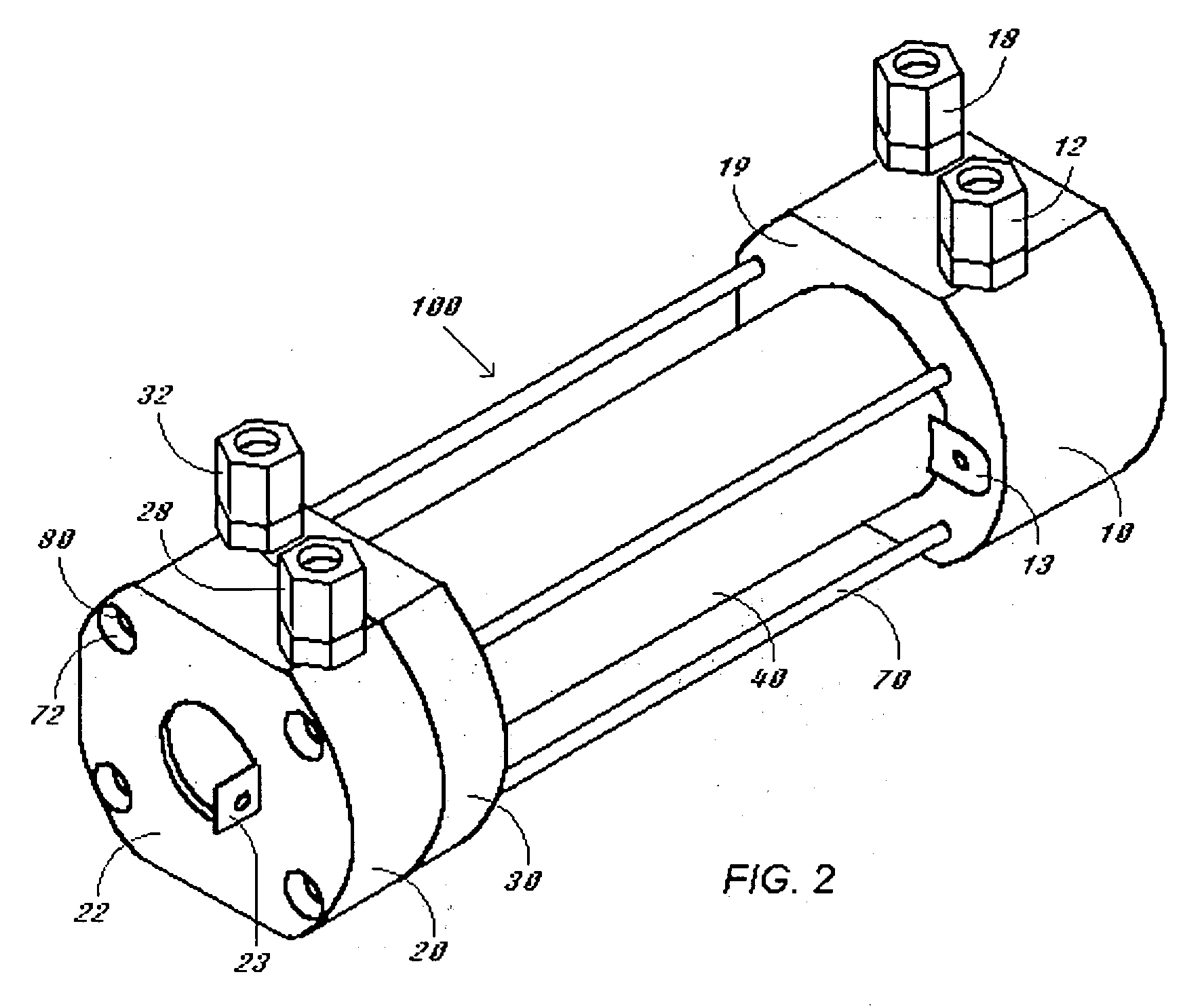Electrolysis cell assembly
a technology of electrolysis cell and assembly, which is applied in the direction of manufacturing tools, electrical-based machining electrodes, machining electrodes, etc., can solve the problems of mass production, maintenance, repairability of these cells, and impracticality of maintenance, and the problem of reliably positioning and attaching the membranes within the cell to achieve sealed anode and cathode compartments remains a problem
- Summary
- Abstract
- Description
- Claims
- Application Information
AI Technical Summary
Benefits of technology
Problems solved by technology
Method used
Image
Examples
Embodiment Construction
[0024]The present invention is directed to the construction of an optimized electrolysis cell assembly that can be mass produced and provides the ability to regularly deconstruct to maintain and repair. One embodiment is illustrated in FIG. 2 and FIG. 3 assembly 100, where a cylindrical electrode 60 is positioned within a cylindrical ion permeable ceramic membrane 50 which is positioned within a complimentary cylindrical electrode 40 by the use of two end pieces which are shown as a one section end cap 10 and a two section end cap 20, 30. The design of these end caps permit the orientation and sealing of the entire assembly 100. One end cap 10 features ports 11 and 17 for direction of the flow of electrolyte solutions through ports ending in fittings 12 an 18 into the compartments defined by the spaces between the electrodes and the membrane 45, 65 and out of the compartment through ports 31 and 27 ending in fittings 32 and 28, respectively, of the other end cap 20, 30, respectively...
PUM
| Property | Measurement | Unit |
|---|---|---|
| Fraction | aaaaa | aaaaa |
| Fraction | aaaaa | aaaaa |
| Angle | aaaaa | aaaaa |
Abstract
Description
Claims
Application Information
 Login to View More
Login to View More - R&D Engineer
- R&D Manager
- IP Professional
- Industry Leading Data Capabilities
- Powerful AI technology
- Patent DNA Extraction
Browse by: Latest US Patents, China's latest patents, Technical Efficacy Thesaurus, Application Domain, Technology Topic, Popular Technical Reports.
© 2024 PatSnap. All rights reserved.Legal|Privacy policy|Modern Slavery Act Transparency Statement|Sitemap|About US| Contact US: help@patsnap.com










